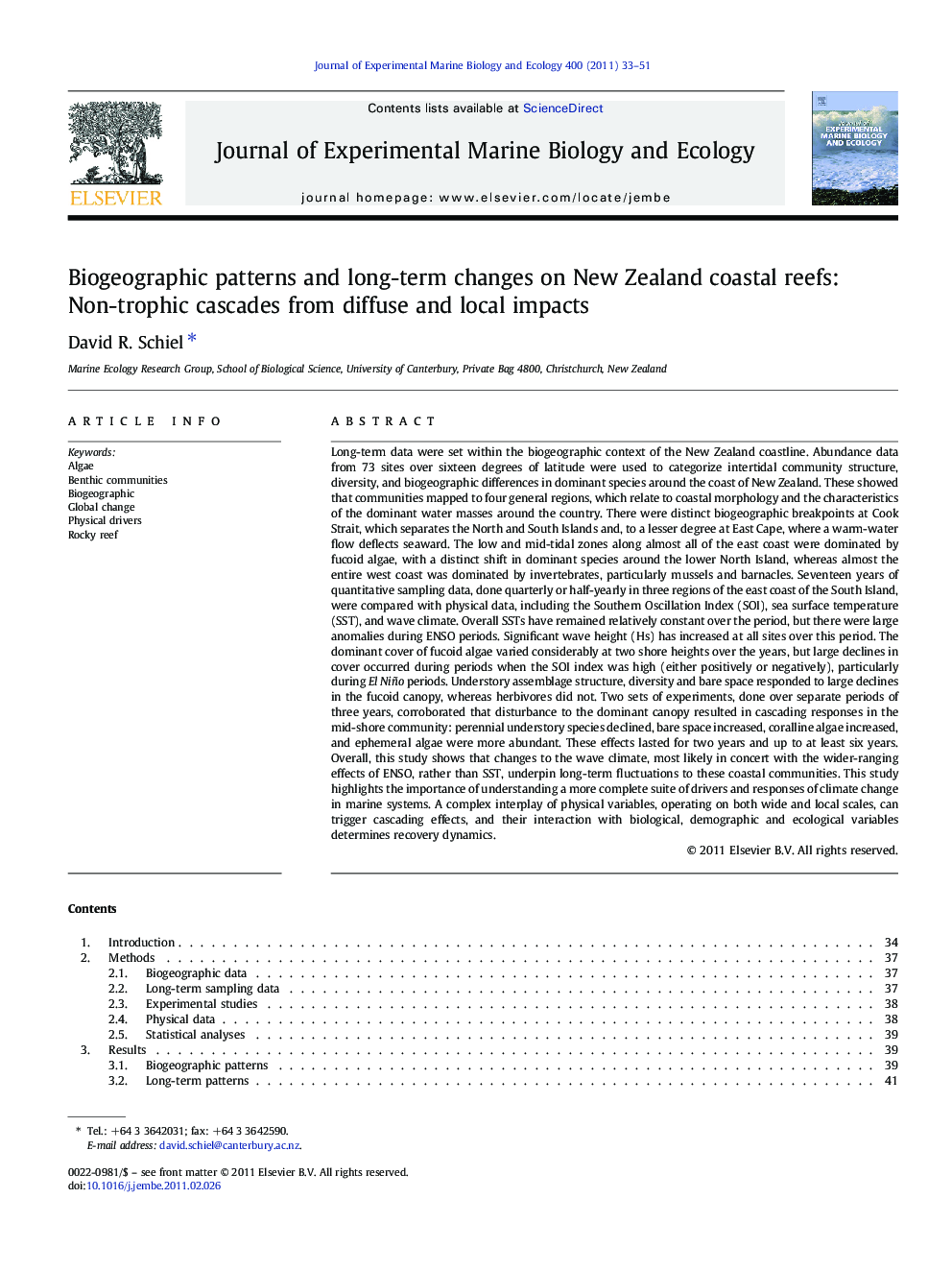| کد مقاله | کد نشریه | سال انتشار | مقاله انگلیسی | نسخه تمام متن |
|---|---|---|---|---|
| 4396334 | 1618463 | 2011 | 19 صفحه PDF | دانلود رایگان |

Long-term data were set within the biogeographic context of the New Zealand coastline. Abundance data from 73 sites over sixteen degrees of latitude were used to categorize intertidal community structure, diversity, and biogeographic differences in dominant species around the coast of New Zealand. These showed that communities mapped to four general regions, which relate to coastal morphology and the characteristics of the dominant water masses around the country. There were distinct biogeographic breakpoints at Cook Strait, which separates the North and South Islands and, to a lesser degree at East Cape, where a warm-water flow deflects seaward. The low and mid-tidal zones along almost all of the east coast were dominated by fucoid algae, with a distinct shift in dominant species around the lower North Island, whereas almost the entire west coast was dominated by invertebrates, particularly mussels and barnacles. Seventeen years of quantitative sampling data, done quarterly or half-yearly in three regions of the east coast of the South Island, were compared with physical data, including the Southern Oscillation Index (SOI), sea surface temperature (SST), and wave climate. Overall SSTs have remained relatively constant over the period, but there were large anomalies during ENSO periods. Significant wave height (Hs) has increased at all sites over this period. The dominant cover of fucoid algae varied considerably at two shore heights over the years, but large declines in cover occurred during periods when the SOI index was high (either positively or negatively), particularly during El Niño periods. Understory assemblage structure, diversity and bare space responded to large declines in the fucoid canopy, whereas herbivores did not. Two sets of experiments, done over separate periods of three years, corroborated that disturbance to the dominant canopy resulted in cascading responses in the mid-shore community: perennial understory species declined, bare space increased, coralline algae increased, and ephemeral algae were more abundant. These effects lasted for two years and up to at least six years. Overall, this study shows that changes to the wave climate, most likely in concert with the wider-ranging effects of ENSO, rather than SST, underpin long-term fluctuations to these coastal communities. This study highlights the importance of understanding a more complete suite of drivers and responses of climate change in marine systems. A complex interplay of physical variables, operating on both wide and local scales, can trigger cascading effects, and their interaction with biological, demographic and ecological variables determines recovery dynamics.
Research Highlights
► Biogeographic data from rocky reefs at 73 sites across 13o of latitude are shown.
► Communities mapped to four regions, north/south of Cook Strait, east/west coasts.
► Over 17 years, significant wave height Hs increased but not SST.
► High SOI and Hs correlated with fucoid decline, leading to cascading biotic change.
► ENSO and wave climate, rather than SST, underpinned long term biota fluctuations.
Journal: Journal of Experimental Marine Biology and Ecology - Volume 400, Issues 1–2, 30 April 2011, Pages 33–51